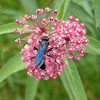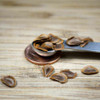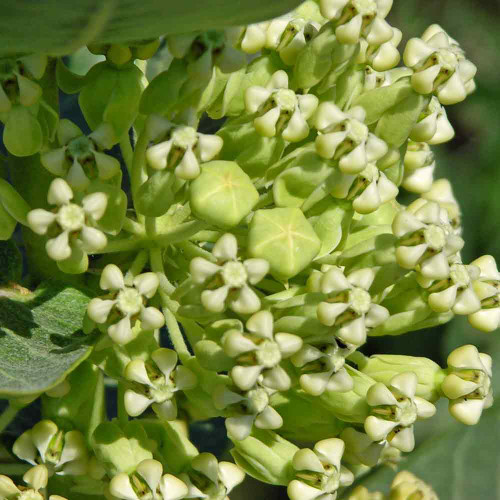Description
Swamp Milkweed - (Asclepias incarnata)
Swamp milkweed likes a bit of moisture, but not as much as its name might suggest. Even though it is commonly found in swampy and wet meadow areas, it is surprisingly tolerant of average soils that are well-drained and is easily grown in full sun to partial shade. Growing in a very large geographical area, it is found growing wild in Southern Arizona and New Mexico, along with 47 other states in swamps, marshes and cienega edges, low fields and pastures, along rocky stream beds and openings in pine to pine-oak woodlands.The deep taproots are one reason swamp milkweed is so adaptive to differing moisture conditions.
It will happily grow in a large container on the patio or in a planter grouping, making it available to arid climate gardeners.
Like most milkweeds, it is a low maintenance plant that delivers much more than it asks. It is deer resistant and is tolerant of a wide range of soils from clay to sandy, if it has a bit of moisture. The small, surprisingly fragrant white, pink, and mauve flower clusters are showy, attracting several species of butterflies, pollinators, and hummingbirds, not just Monarchs.
Swamp milkweed is one of the few milkweeds that supply nectar to the adult butterflies, along with a food source for the developing caterpillars. It is also of special value to several species of bees, including native, bumble bees, and honey bees.
Flowers
June to October
Will These Grow in My Area?
The range of these milkweed species is not limited to Arizona but in most cases the entire southwest and beyond. Refer to the USDA map link and please realize that a milkweed species can grow and thrive outside of the areas listed if the conditions are favorable.
From that link, you’ll see the states shown where the milkweed is native. If you find a state that has areas with climate and conditions similar to yours, then that milkweed will most likely do very well for you.
Pods
Milkweed pods contain a seed floss that is used to stuff pillows or mixed with other fibers to make a cloth. It is used in Life Jackets or as a stuffing material. It is very water repellent. The floss is the mechanism for seed dispersal.
Why This Milkweed is Special
This milkweed seed is the highest quality available anywhere. It is hand-grown across central and northern Arizona, hand-harvested, hand-cleaned, and hand-packed. Over the past five years it has been test-grown in different elevations to verify the vigor and adaptability to different conditions.
Terroir Seeds is proud to be the exclusive partner in offering these unique milkweed seeds to home gardeners. The sale of each packet of milkweed seeds directly supports the continued, on-going research of Arizona Milkweeds for Monarchs organization, a dedicated volunteer citizen science research organization that is overseen by professional scientists from Northern Arizona University.
The milkweed plant (Asclepias spp.) plays a critical role in the monarch life cycle. Each spring Monarchs move across the United States, laying eggs on native milkweed, the only plant that serve as food for newly hatched monarch caterpillars. Arizona has more than 40 species of milkweed - more than 50% of the total diversity of milkweeds in the continental US - giving it the second greatest diversity of milkweeds next to Texas.
Other Names
- Asclepiade rouge
- Marsh Milkweed
- Pink Milkweed
- Rabbit-milk
- Rose Milkweed
- Rose Silkweed
- Water nerve root
- White Indian Hemp
Growing Tip
In the fall when the milkweed pods split open and the seeds are flying out on the breeze, they have a natural germination-inhibiting coating on them so that they don’t sprout too early and die off during the winter.
Moisture and abrasion act on the seed coating to soak and wear it off in nature, allowing moisture into the seed in early spring to start the germination process.
Cold-wet stratification is easy to do at home and significantly increases the germination rate before planting them.
Here’s how to do it – label a sandwich-sized ziplock bag with the name of the milkweed and date, then fill it about 3/4 full with sand, decomposed granite, or another abrasive media. Add enough water to make the sand very wet – you should see the sheen of water when you squish the bag. Add the seeds – however many you want to plant – to the mixture and place the baggie on the top shelf of your fridge, where you can move it a couple of times daily.
This cool, wet, abrasive action mimics a winter in nature while starting the germination process.
Once a month has passed, plant your seeds as usual.
Learn More
- Milkweed, Monarchs and Home Gardeners to the Rescue
- Milkweed Seed Germination Procedures
- Growing Milkweed for the Monarch Butterfly
- Planting A Pollinator Feast
From the soil to the seed to the food you eat - we'll help you grow your best garden!













